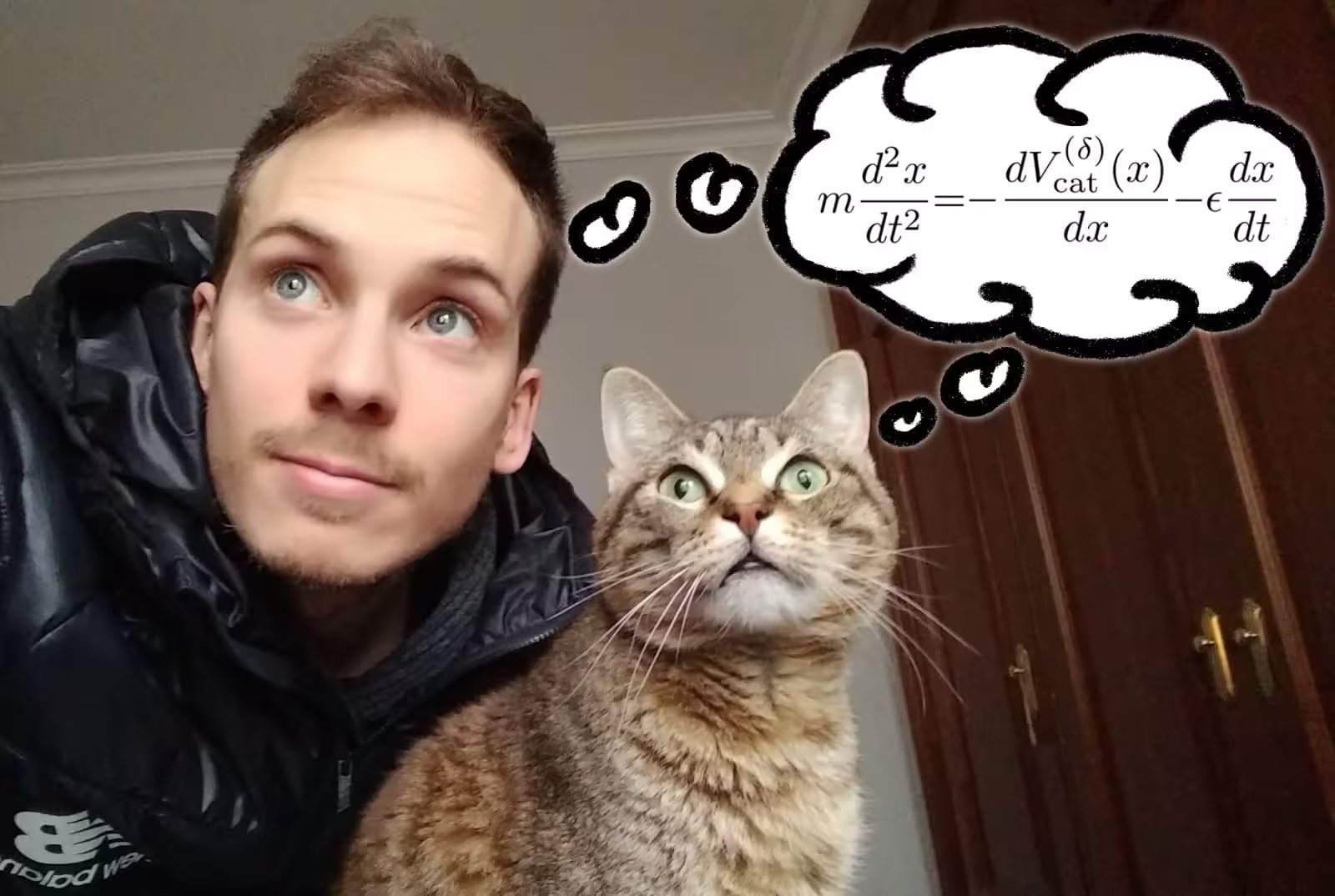The French scientist considered the cat as a point particle and modeled its movement in the presence of a person. He published the resulting calculations and equations in a new scientific paper. With the help of science it is possible not only to answer fundamental questions, but also to describe events in everyday life. For example, the authors of recent studies calculated how to properly hold a Frisbee disc while playing golf, and also found out where it is more convenient to stand in closed smoking rooms and that glasses of a certain shape are most suitable for cold beer.
Physicist Anxo Biasi (Anxo Biasi) from Sorbonne University in France made an equation that describes the movement of cats when a person is nearby. The cat followed Amy, helping the scientist compile the equation. The results of the study have been published American Journal of Physics.
Biasi perceived the cat as a point particle moving in the potential created by a human. He suggested that “cats act as if they sense the power surrounding a person.”
- Cats usually rest at a distance from people.
- When cats lie down on a person (e.g. lap, belly, back), minimal stimuli such as a fly or a gentle sound can cause them to leave. The intensity of the deviations required for the cat to start moving depends on its level of attachment to the person on which it lies.
- People make rocking movements back and forth while petting cats.
- When people call cats, they rarely respond.
- When cats decide to approach the person calling them, they are often distracted by the road and cannot get there.
- At night, cats run chaotically back and forth around the house.
- Cats purr (make a soft vibrating sound) when they enjoy being petted by a human.
The physicist thought that the cat felt a “force” associated with an external potential (arising from the presence of a person). He determined the cat’s position relative to the person at point x = 0 at time t as x
According to Biasi, based on the results of his research analyzing the behavior of felines, it is possible to clearly demonstrate how the equations are formed:
“This work interestingly illustrates the mental process involved in creating physical models that are rarely described in detail in books. <…> “The model of interaction between a cat and a human brings physics closer to non-specialists and reveals the logic of building physical models using the example of an interesting and familiar situation,” concluded the scientist.
Source: Port Altele
